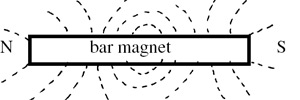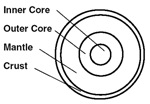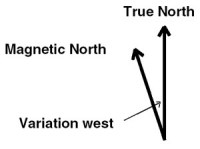
| Glasgow Digital Library | Voyage of the Scotia | BRUCE | PEOPLE | SHIP | ANTARCTIC | INDEX |
|---|
'Almost every important recent Polar expedition that has set out for work extending over a period of 12 months, has laid itself out to make a study of magnetic conditions.'
William Speirs Bruce
Magnetic observations formed an important part of all Antarctic expeditions, and the magnetic compass was essential to the world's trade by sea. The Scotia expedition, like many other voyages of exploration, was interested in the variations of the Earth's magnetic field which affected their compasses. On Laurie Island a special hut was set aside for magnetic observations.

Effect of bar magnet on iron filings to show magnetic sphere

The core of the Earth is mainly made up of iron which results in the planet acting like a giant bar magnet. The magnetic sphere of a bar magnet can be shown by placing it in iron filings. The Earth has a similar magnetic field, the magnetosphere.
The magnetic compass points to the North Magnetic Pole, which is some distance from the true or geographic North Pole. The magnetic poles move around the polar area, so every year the difference between True North and Magnetic North varies. This difference is known as variation and is shown on all Ordnance Survey maps and Admiralty charts.

It is most important for ships' masters to know the variation, along with any errors arising from their ships' own magnetism - this is known as deviation.
| Variation at Troon, Ayrshire: | 1841 | 27.5°W |
| 2000 | 7°W |
Scotia made regular magnetic readings, as did the German ship Gauss and British ship Discovery. The latter two ships were both fitted with bronze fittings around the compass and other magnetic instruments.
| Glasgow Digital Library | Voyage of the Scotia | BRUCE | PEOPLE | SHIP | ANTARCTIC | INDEX |
|---|